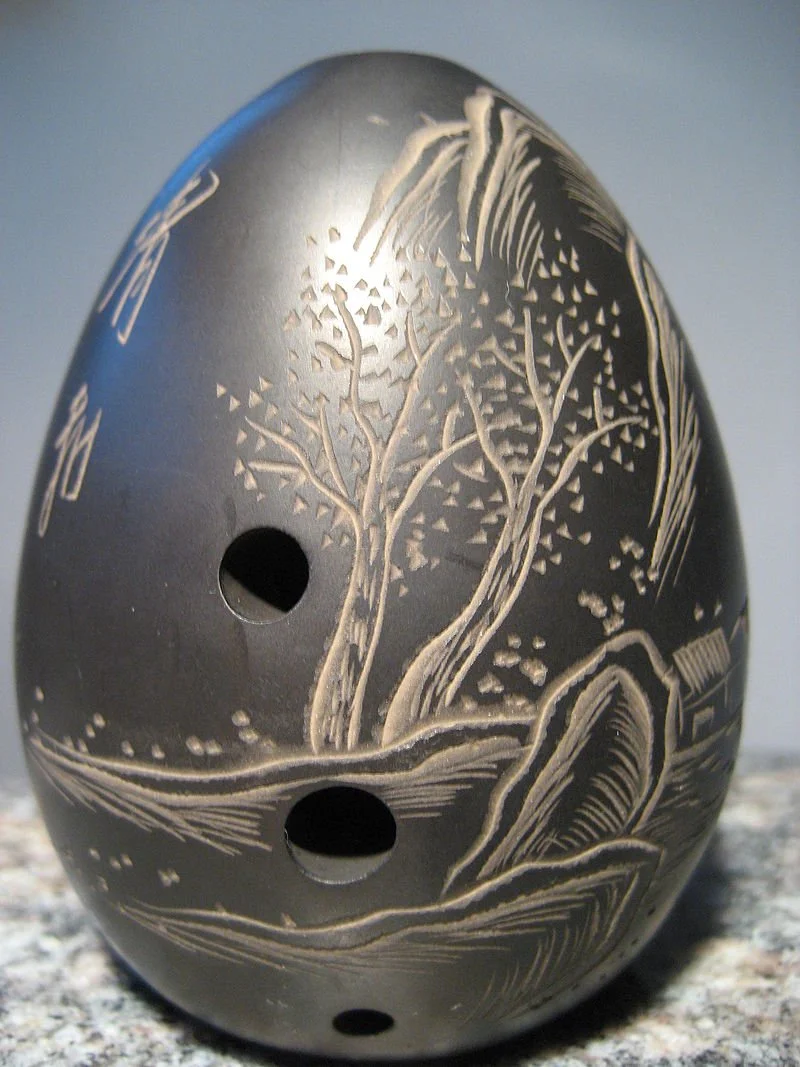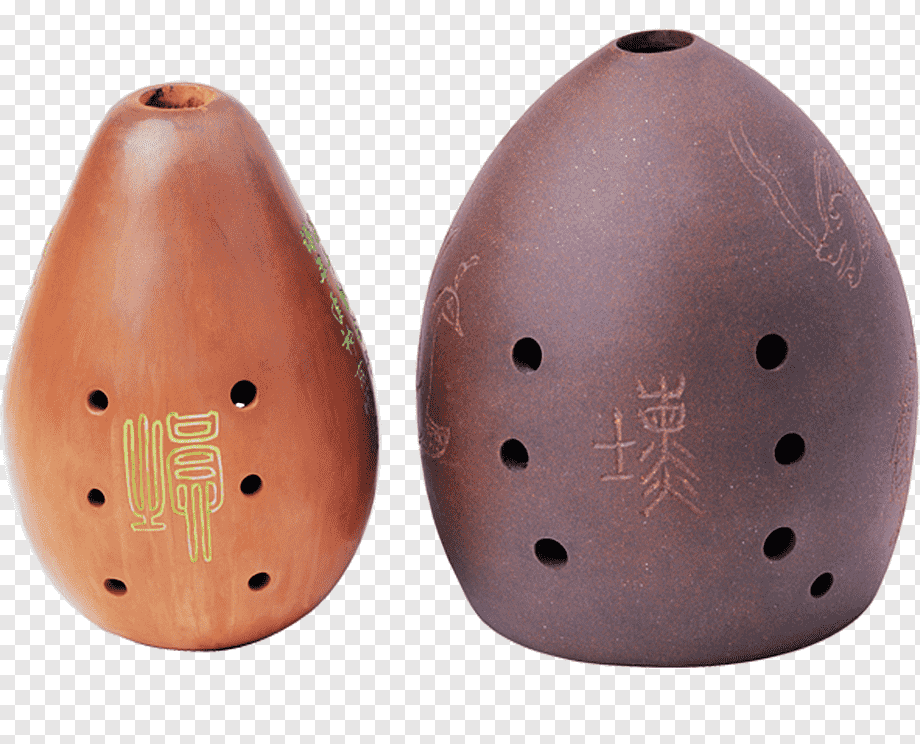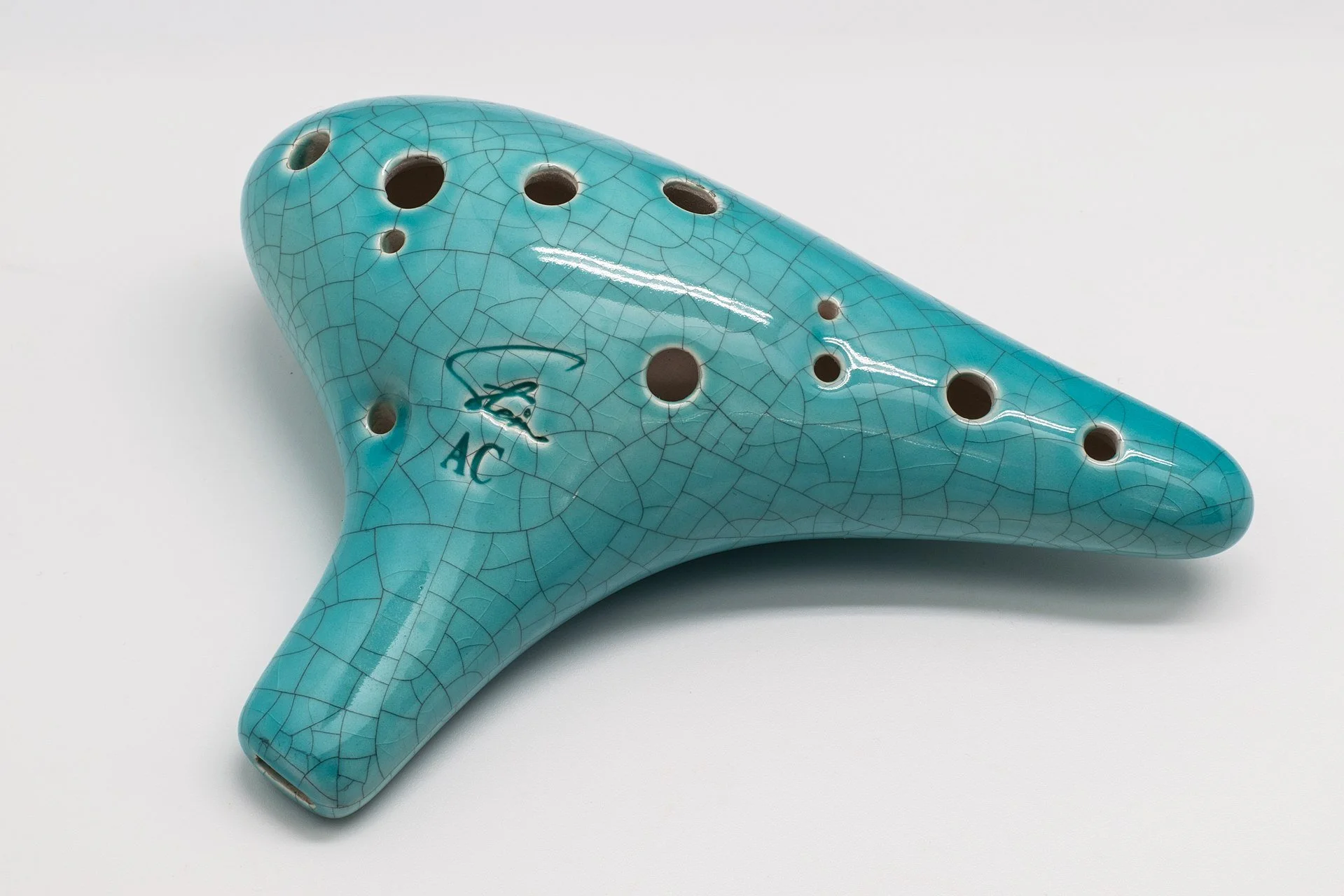An egg-shaped vessel flute from China (埙) with a blow and finger holes, it’s one of that civilisations oldest instruments with a haunting, delicate sound, mostly made clay or ceramic, but sometimes bone, wood, stone, gourd, even bamboo. Dating back five or six millennia to the Stone Age, the oldest surviving Chinese encyclopedia, Erya, from the 3rd century BC, describes it as having six to eight holes, with range is generally no more than an octave and traditional models range from the lower register goose egg size, to the higher-pitch chicken egg size, with slight variations in shape. The top hole is blown across, a bit like the top of a bottle.
It is thought the origin comes from a clay ball on the end of rope used for hunting animals, which, with often at random being hollow or having a hole, would sometimes make a pleasant sound when swung around, which then brought about the development of the instrument, which later became very popular during the Xia dynasty. Xuns can often be ornated decorated or just be simple clay models. Let’s see and hear some examples and demonstrations:
Some xuns have ornate decoration
The xun is closely related to the alternatively shaped ocarina, which dates back as much as 12,000 years from in Chinese and Mesoamerican cultures.
So then, any more xun music or cultural references come to mind? Feel free to share any further ones from songs, or even film, art or other contexts in comments below.
You can also get in touch the contact page, and also visit us on social media: Song Bar Twitter, Song Bar Facebook. Song Bar YouTube. and Song Bar Instagram. Please subscribe, follow and share. New to comment? It is quick and easy. You just need to login to Disqus once. All is explained in About/FAQs ...
Song Bar is non-profit and is simply about sharing great music. We don’t do clickbait or advertisements. Please make any donation to help keep the Bar running:




